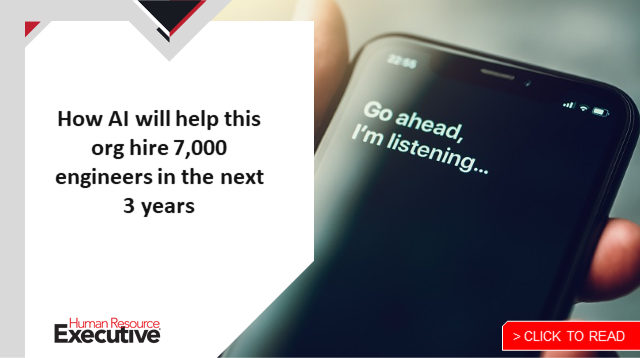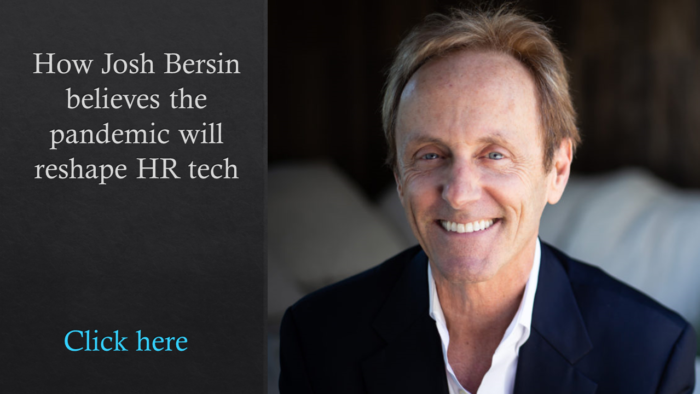The pandemic and the Great Resignation have spawned a new war for talent that is pushing HR leaders to find new tools for attraction and engagement.
Houston Methodist Hospital has been out front in using AI in its talent acquisition process, even before COVID-19 hit, said Tom Vernon, vice president of talent and experience.
“The healthcare industry is no different than other industries looking to recruit talent,” Vernon said, speaking at the virtual HR Technology Conference this week. “We’ve had a higher-than-typical turnover. There’s a lot of people coming and going right now in healthcare.”
 But one thing that helped the healthcare provider, Vernon added, was having already put in place a strategy to personally engage potential job candidates throughout the process, known as the “Know Me Personalized Journey.” With that journey, the organization utilizes technology to connect with candidates quickly, effectively and more efficiently, added Carlos Fernandez, talent acquisition manager at Houston Methodist.
But one thing that helped the healthcare provider, Vernon added, was having already put in place a strategy to personally engage potential job candidates throughout the process, known as the “Know Me Personalized Journey.” With that journey, the organization utilizes technology to connect with candidates quickly, effectively and more efficiently, added Carlos Fernandez, talent acquisition manager at Houston Methodist.
See also: Is VR the solution to soft skills training?
“How can we connect with candidates quicker—get them on the phone or leverage text?” he said about the program’s aims.
One way it does that is through Mia, an AI chatbot assistant created by tech company Paradox that was already in operation before the pandemic.
“It was important during the pandemic; a lot of things that used to typically be in person—interviews, screening, career events—became virtual, and we already had a virtual presence,” he added.
Related How HR technology can help fix the Great Resignation
“What we learned initially is we wanted to use a lot of this virtual tech to engage people 24 hours a day, or for people who didn’t live in Houston,” he said, adding these tools were only used as the first step to engage candidates and then connect them with a live person, he added.
The development of the organization’s tech-enabled recruitment process is ongoing, Fernandez added, noting it’s currently incorporating live events, videos and employee testimonials into the recruiting tech platform.
“I think it’s all about a journey,” he said. “It’s not a destination. We’re continuously evolving.”
The design of the programs Houston Methodist puts in place are also in part fueled by the makeup of its workforce. For example, nurses are generally working in one of three shifts: day, evening or night.
“Some nurses are coming off their shift at 7 a.m., and that’s when we have a prime opportunity to connect with them,” Vernon said. “We need to meet the candidates where they are in their time. That’s part of the equation.”
 But the tech alone isn’t the only key to the organization’s recruiting strategy; the second part of that equation is the follow-up, Fernandez said. “We all know you can have great technologies in place, but if the process is broken, then we will definitely have gaps on the table. It’s having the right people behind the scenes to connect with candidates efficiently.”
But the tech alone isn’t the only key to the organization’s recruiting strategy; the second part of that equation is the follow-up, Fernandez said. “We all know you can have great technologies in place, but if the process is broken, then we will definitely have gaps on the table. It’s having the right people behind the scenes to connect with candidates efficiently.”
Related How inclusivity and innovation drive L’Oréal USA’s people practices
For instance, within minutes of Mia first coming online, it initiated a conversation with a night nurse candidate in California, Vernon said. That person was able to have the initial chat with the digital assistant, schedule a conversation with the TA team and start working within 21 days, which he said was “extremely fast.”
“Our first segment is very quick: We identify someone for a screening interview and get that scheduled,” he said. From there, it’s about the handoff to the recruiting team that works with the hiring managers. “We try to complement speed but want to make sure it meets the needs of our candidate and our organization.”
“Speed does not replace the quality, culture and people committed to working here,” he added.

